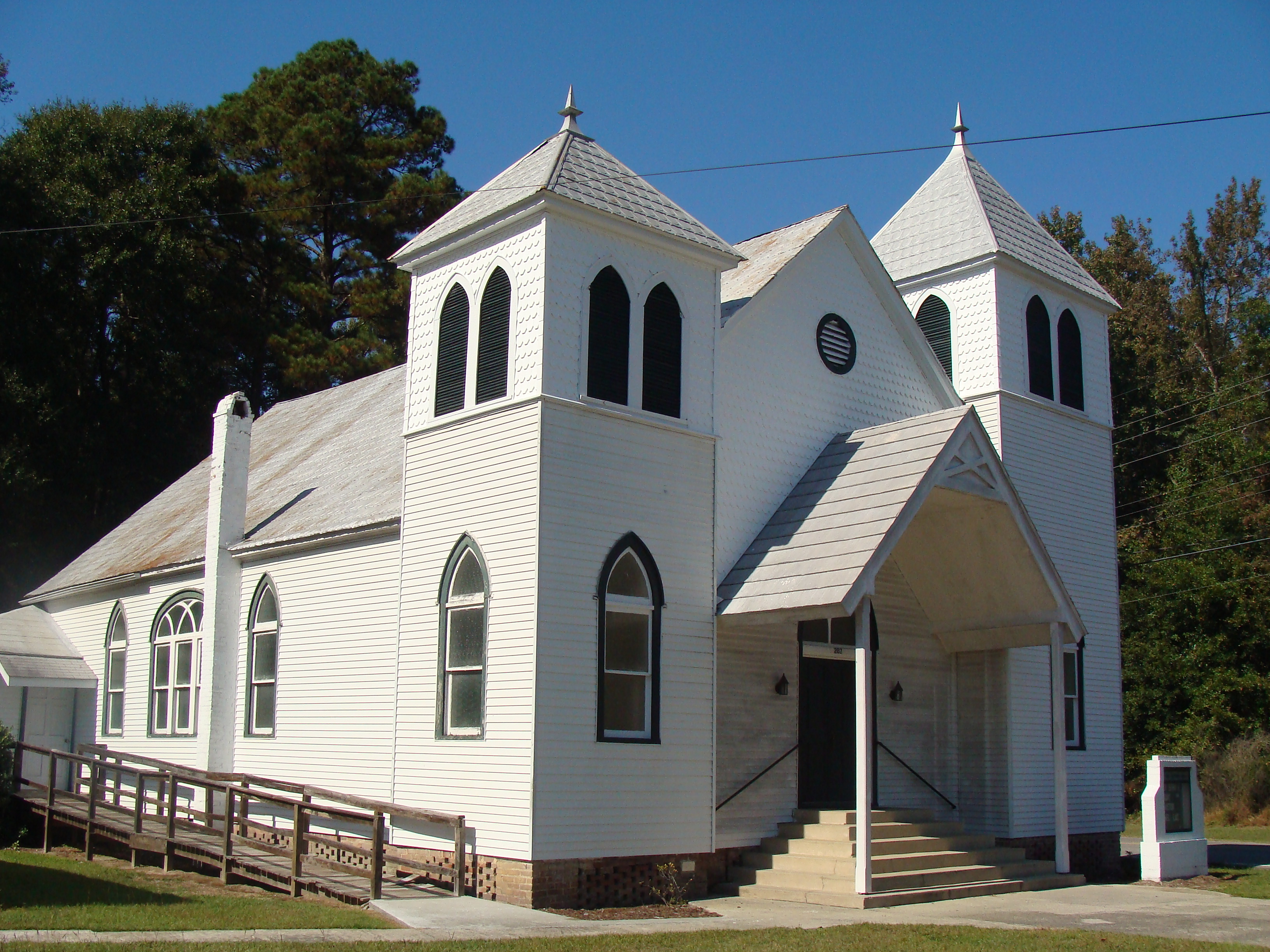Estill Methodist Church
 In 1901, new residents to Estill were distressed to find that their new home did not have a place of worship within the settlement of that time. The congregations met together occasionally at a little school house which had once been the “Old St. Peter’s” Methodist church. This building originally stood on a bluff near the Winthrop Place. It had been moved into the new settlement in 1894, and placed on the present site of the Bailey and Walter Theus residences. It was to this building that the people of the community went, upon occasion, to hear a sermon from some itinerant preacher, or an invited evangelist. There was no church here, neither Methodist nor Presbyterian. There was the Lawtonville Baptist Church in the country, and the Episcopal Church of the Heavenly Rest, out even further in the country, but neither of these was close enough to answer the combined needs of their congregation and these other groups who wanted to worship in their own manner.
In 1901, new residents to Estill were distressed to find that their new home did not have a place of worship within the settlement of that time. The congregations met together occasionally at a little school house which had once been the “Old St. Peter’s” Methodist church. This building originally stood on a bluff near the Winthrop Place. It had been moved into the new settlement in 1894, and placed on the present site of the Bailey and Walter Theus residences. It was to this building that the people of the community went, upon occasion, to hear a sermon from some itinerant preacher, or an invited evangelist. There was no church here, neither Methodist nor Presbyterian. There was the Lawtonville Baptist Church in the country, and the Episcopal Church of the Heavenly Rest, out even further in the country, but neither of these was close enough to answer the combined needs of their congregation and these other groups who wanted to worship in their own manner.
In 1902, members of the community began gathering in the home of Janie Boyd Rhodes and her husband, Julian E. Rhodes on Sunday evenings for cottage prayer meetings. At one of these meetings she asked, “Why can’t we build a little chapel to worship our God as we would like, in surroundings set aside for that sacred purpose?” The Methodists who were present in the group would journey back and forth to Lebanon Methodist Church near Scotia once or twice a month to worship. Since travel in those days meant a long, freezing ride in winter, or an equally long, hot, blistering ride in summer by horse and buggy, these Methodist were enthusiastic to have a Methodist church here. Although there were those present that night who felt that this was surely a foolish and extravagant idea; that it would cost too much, that it would entail too much sacrifice, God was working in the hearts of the people. There were enough Christians present that night to begin to plan to actually build a Methodist church for the Estill community.
Dr. W.M. O’Neal and his daughter, Mrs. W.C. Johnson, members from Lebanon Church near Scotia, gave the deeds and titles for the site of the present church and parsonage to the group for their new church home. Finally after many hardships and discouragements, their faith received dividends when the little church began to go up in 1908. After the building was completed, they found that they still owed a deficit of $1,800. It took several years before this debt could be resolved and the church could be dedicated. In 1909, the evangelist Mr. Yarboro came to Estill Methodist Church and was instrumental in getting a few ladies to join the congregation. These fine ladies helped spear-head a plan to obtain a piano for the sanctuary to help out with the services. Several years later, when the debt had been fully paid, the church was formally dedicated by Rev. Walter I. Herbert, the presiding Elder, during the pastorate of Rev. J.R. Copeland.
* Excerpts from History of the Estill Methodist Church